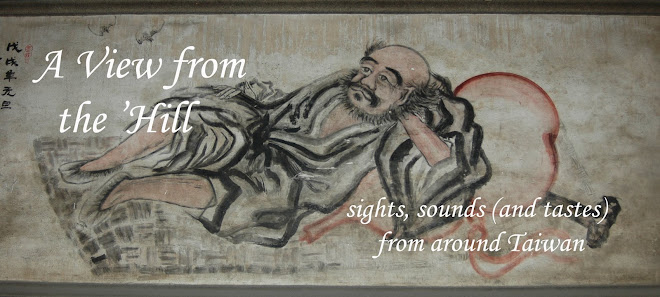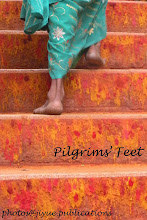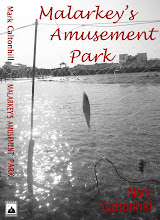On a warm spring Sunday afternoon, Hsu Ching-jan, his wife and 8-year-old daughter make their way towards downtown Kaohsiung City to go shopping and eat snacks before heading home. All are riding newish-looking bicycles and are wearing regulation helmets and brightly colored cycle jerseys. They are just three of a great many cyclists thronging the car-free bike paths running along both sides of the Love River near the city’s harbor.
“We come here once or twice a month,” said Hsu. “Actually, it was my daughter Cindy’s idea originally. She’d heard about it from her classmates.”

This is typical of the way the pleasures of cycling spread by word of mouth. The Internet is similarly abuzz with recommendations.
“After many years of avoiding Taiwan’s second largest city [Kaohsiung], I recently went back,” Andrew Kerslake, a U.S. citizen residing in Taichung, wrote on his blog Taiwan in Cycles last fall. “The place had totally been transformed into a large friendly metropole with a small town feel.”
“It was gorgeous,” he concluded. “Most of all I felt safe.”
This final point is a key consideration. When asked why they do not cycle regularly, many Taiwanese cite safety as a major concern, along with pollution and—especially among women—getting sunburned.
Local cyclists have their own solution to this last problem: covering every inch of their flesh with layers of clothing. Regarding the first two, they have to rely on drivers’ etiquette and government administrations’ pursuit of antipollution policies.
“In order to make cycling more convenient and safer for citizens, bike paths are constructed as part of the sidewalk, so as to avoid bikes having to compete for road space with cars and motorbikes,” Kent T. Wang, director-general of Kaohsiung’s Department of Transport, said by e-mail.
Furthermore, to encourage cyclists to use the paths, he stressed that “they are built in coordination with road construction projects and in accordance with the same principles of signage, signaling and road marking.”
This will be good news to many cyclists visiting Kaohsiung from other cities—around the world and not just in Taiwan—who often feel themselves to be second-class road users. Taipei’s bike paths, for example, have few signs directing cyclists to destinations and no distance indicators other than those relating to the section of path being used.
“According to statistics from the Ministry of Transportation and Communications, Kaohsiung’s rate of cycle use in 2009 was 6.7 percent. This compares with a 2005 figure from my own department of 4.3 percent before the bicycling system was constructed,” Wang said. “This shows the gradual increase in bicycle use among Kaohsiung’s citizens.”
Wang explained that motivation for the city’s investment in cycling infrastructure was two-fold. “Our administration decided to promote the use of bicycles as an alternative to motorbikes for short journeys because they are better both for individual health and for protection of the environment. As such, it is part of our efforts to meet Kaohsiung’s low-carbon target.”
Due to its strategic location, from early in the period of Japanese rule, Kaohsiung was developed as the island’s major industrial region, a process that only intensified after postwar retrocession as it became the engine powering the Taiwan economic miracle. As the center of heavy industry—particularly steel, energy and petrochemical production—with thousands of factories, the city also recorded some of the nation’s worst air, water and land pollution indices, and one of the worst per capita carbon dioxide emission rates in the world.
It was against this background that incumbent two-term Mayor Chen Chu was elected. Two key items on her campaign manifesto were the improvement of transportation and emphasizing of environmental protection.
Not merely words with which to get elected, these policies have remained central to her efforts to transform Kaohsiung into a low-carbon and environmentally sustainable metropolis.
While most of the cuts in per capita emissions targeted—30 percent by 2020 and 80 percent by 2050—will have to come from the industrial, commercial and residential sectors, transportation policy can also play a role in a city notoriously addicted to car and motorbike use. Chen’s administration has expanded the city’s bus system, acquired hundreds of new, energy-efficient buses, and doubled MRT shuttle bus connectivity. It has also expressed its commitment to the embattled MRT system despite poor usage rates by citizens.
Folding bikes can be taken on buses and the MRT for free, and regular bikes on the MRT for a flat bike-and-passenger ticket of NT$60 (US$2.32), said Wang.
Alternatively, citizens can take public transport to one of 50 kiosks around the city to rent one of 4,500 bikes at a subsidized rate starting at NT$30. This C-Bike scheme, Taiwan’s first urban bike rental program, was what particularly caught CNN’s attention.
“NT$75 million of the costs for the C-Bike project came from the central government,” Lee Mu-sheng, director-general of the city’s Environmental Protection Bureau, said, also by e-mail. “With NT$15 million from the city budget, this made a total of NT$90 million in 2008.”
As for the 230 kilometers of bike paths, Wu Ming-chang, director of the Maintenance Office in the Public Works Bureau, estimated they had cost around NT$40 million for upkeep in the period 2010-11.
So do riders feel these investments have made Kaohsiung a cycling paradise?
Hans Chen, a Kaohsiung native who now lives in Taipei and commutes by bicycle from Guandu to the city center, said he prefers the Kaohsiung system, “because it is less abused by motorcyclists who illegally take shortcuts on the capital’s bike paths.”
American consultant Michael Cannon recently made the opposite move, from Linkou in New Taipei City to be near his wife’s family in Kaohsiung. “Riding around Kaohsiung itself with the flow of traffic is easier and more comfortable in comparison to riding in Taipei,” he said. “Due to the prevalence of scooters here, drivers are quite conscientious about cyclists and don’t push them off the roadway.”
But Michael Turton, an American educator based in Taichung, said he preferred Taichung or Taipei, not because the facilities were better, but because “the mountains are right outside your door, whereas in Kaohsiung there are many kilometers of terrible traffic between you and the beautiful hills.”
All three cyclists had suggestions for further improvements in Kaohsiung, from the removal of stray dogs to the provision of access ramps and extension of the system.
Moreover, there needs to be a change in perception of cycling from a twice-per month hobby to a transportation system if people like the Hsus and their daughter are going to commute daily to work or school by bike, and thus really contribute to hitting Kaohsiung’s CO2-emission targets




No comments:
Post a Comment